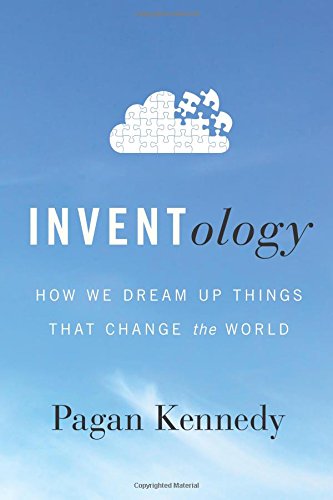
Inventology
How We Dream Up Things That Change the World
کتاب های مرتبط
- اطلاعات
- نقد و بررسی
- دیدگاه کاربران
نقد و بررسی

November 16, 2015
Kennedy (Black Livingstone), former innovation columnist for the New York Times Magazine, examines the process of invention, wondering whether there is any formula for success. Kennedy interviews more than 100 inventors in different fields, asking who really does the work of invention, what we can learn from data on successful inventions, and what can be gained from emerging technologies such as 3-D printers. Along the way, she provides fascinating studies of numerous innovations, such as the rolling suitcase and color printing. Kennedy divides the book into five sections, each exploring a different strategy for invention: finding problems, discovery, prophecy, connecting, and empowerment. She also looks at how creative people channel frustration into solutions and explores the role of serendipity. Her interviewees recommend ways to think ahead of the curve and overcome self-doubt. The most absorbing chapter centers on “cross-pollinators”—people who carry ideas from one domain into another, thereby enabling new solutions. This book offers a new perspective into the process of invention that will inform and illuminate. Agent: David McCormick, McCormick Literary.

Starred review from November 1, 2015
A journalist delivers an enthusiastic overview of inventions and the researchers that study them. Kennedy (The First Man-Made Man: The Story of Two Sex Changes, One Love Affair, and a Twentieth-Century Medical Revolution, 2008, etc.), the former "Innovation" columnist for the New York Times Magazine, emphasizes that some inventions--e.g., the rolling suitcase, sippy cup, computer apps, prosthetics--fulfill a need. Others (Velcro, Teflon, X-rays, the laser) emerge as oddball phenomena with no obvious use at the time of their invention, and years may pass before people discover what they are good for. While Kennedy seems to have a low opinion of the concept of inspiration, she finds that breakthroughs often follow happy accidents. For example, researchers testing a heart medication discovered that subjects were getting erections, so the medication became Viagra. Kennedy pays close attention to science fiction and futurology, perhaps more than results justify. In the 1960s, observers who saw the future of communications, which gave us the personal computer, cellphone, and Internet, hit the jackpot because the development of computer chips was genuinely revolutionary. Improvements in energy technology and medicine have been modest, so futurists who have routinely predicted interplanetary travel and cancer cures have a dismal record. In the concluding chapters, the author explores how inventors think. One scientist told her that "the 'aha' moment is overrated." Kennedy notes how the "real creativity and insight occur as people struggle with a problem in their minds" and then as they translate that into reality. "Inventology" may be a real science; researchers are beginning to study it, and teachers are teaching it. Some 21st-century creations (crowdfunding, 3D printing) are breaking down barriers (money, time) between new ideas and a useful product, so a golden age of innovation seems in the offing. A delightful account of how inventors do what they do.
COPYRIGHT(2015) Kirkus Reviews, ALL RIGHTS RESERVED.

























دیدگاه کاربران